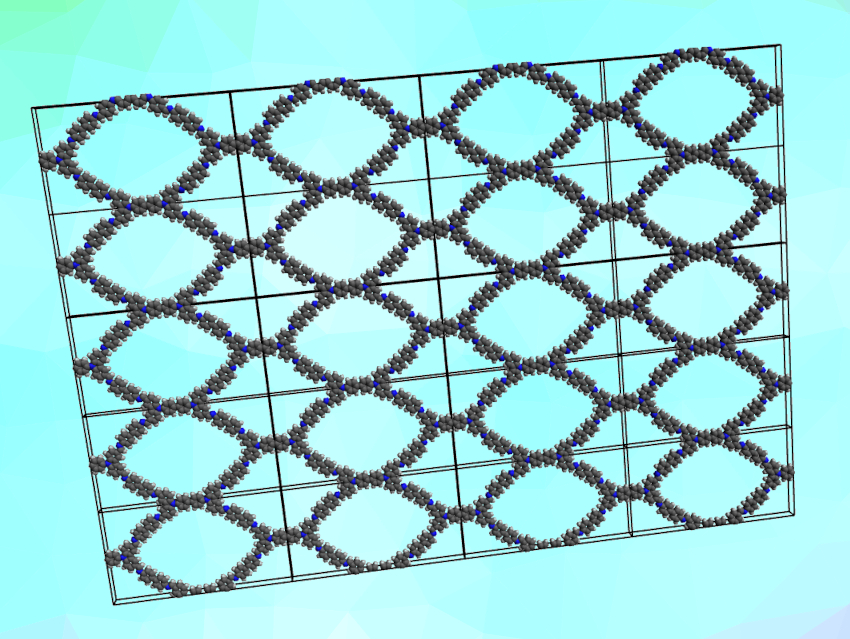Covalent organic frameworks (COFs) are porous crystalline networks made from organic building blocks. They can be used, e.g., in gas storage and separation or sensing applications. One possible use for such porous materials could be humidity control in indoor environments via the adsorption and desorption of water.
Volodymyr Bon, Stefan Kaskel, Technische Universität Dresden, Germany, and colleagues have developed two chemically stable, isostructural, two-dimensional, imine-linked COFs, called DUT-175 and DUT-176 (example pictured). The materials show high capacities for water adsorption as well as a pronounced color change with changing pH. The team synthesized DUT-175 and DUT-176 from 4,4′-bis(9H-carbazol-9-yl)biphenyl tetraaldehyde and phenyldiamine or benzidine, respectively, via a condensation reaction.
The resulting COFs DUT-175 and DUT-176 have distorted hexagonal pores with sizes of ca. 1.9 nm and 2.2 nm, respectively. The frameworks have a high porosity and DUT-175, in particular, can adsorb up to 0.72 g g–1 water. They also show a pronounced color change with changing pH levels, from dark red in highly acidic environments to yellow in basic media. This is due to the reversible protonation of the imine nitrogen. According to the researchers, the COFs might be useful for indoor humidity control.
- Chemically Stable Carbazole-Based Imine Covalent Organic Frameworks with Acidochromic Response for Humidity Control Applications,
Leisan Gilmanova, Volodymyr Bon, Leonid Shupletsov, Darius Pohl, Marcus Rauche, Eike Brunner, Stefan Kaskel,
J. Am. Chem. Soc. 2021.
https://doi.org/10.1021/jacs.1c07148



